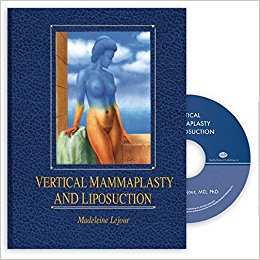Editors: Kevin J. Knoop, Lawrence B. Stack, Alan B. Storrow & R.Jason Thurman, MDs
Publisher: McGraw-Hill Medical – 876 pages
Book Review by: Nano Khilnani
This is a large book of almost 900 pages with broad coverage of trauma cases that emergency physicians face on a daily basis. It can be an abscess, allergy attack, blood clot in veins, broken bone, diabetic collapse, dislocation of the shoulder, fracture of the skull, inflammation in an internal organ, inhalation of a noxious gas, injury, hemorrhage, loss of vision, occlusion, rupture of the spleen, swallowing of a foreign object, or anything else that is life-threatening.
This is the third (2010) edition of the book, which also functions as a reference manual. It has chapters on airway, electrocardiography and toxicology added to it, along with some images of tropical diseases. It has less text and more than twice the number of images contained in the second edition published in 2002. This book was first published in 1997.
The four editors named above gathered and edited the materials from more than 50 medical specialists who are named as contributors in this book. In addition, there were more than 160 of photographs submitted that were used in this massive project. Compiling such a large mass of useful materials has made this book of an immense value to emergency room doctors and other members of the medical profession.
Besides the large volume of full-color photographs, you will find other pictorial aids such as clinical photos, electrocardiograms, illustrations, radiograms, and ultrasound images.
The extensive range of problems and issues it presents along with recommended treatments makes this book very valuable. Another most important value of this book is its large number and range of full-color photos that enables medical personnel to easily identify what type of case they are dealing with, and what they need to do immediately.
The 876 pages of materials are organized into 25 chapters which are then grouped into just two parts. Part 1 is entitled Regional Anatomy and Part 2 is named as Specialty Areas. For a book of this size, there has to be a long index in the end that the reader can quickly refer to, so you will be happy to know that you can easily get to the topic you are looking for, arranged alphabetically through about 25 pages.
This book is useful not just to emergency and attending physicians but also to interns, nurses, paramedics, physician assistants, residents in training, surgeons, professors of medicine, researchers, medical graduates studying for board exams, and whoever is involved in treating patients in emergency rooms, and learning from real-life cases.
Just about any damaging result of any type of accident, impairing or potentially fatal occurrence, is covered in this tome. And just about any external part of the body or internal organ system that has been affected, is also taken up in this extremely useful and helpful manual of emergency medicine.
Head and facial traumas, including injuries to the eyes, ears, nose, throat, and mouth are covered in the first six chapters. Chest and abdominal traumas are extensively discussed in the 30-page chapter 7. Urologic conditions, sexually transmitted infections, anorectal, gynecologic and obstetric conditions are taken up in chapters 8 through 10. Traumas of the extremities are covered in chapters 11 and 12 and skin problems in chapter 13. All of the above are covered in the first part of the book.
The specialty areas in Part 2 of the book relate to pediatric conditions and child abuse, problems arising from exposure to the environment, toxicological conditions, wounds and soft tissue injuries, forensic medicine, HIV conditions, tropical medicine, airway procedures, electrocardiogram abnormalities, emergency ultrasound and microscopic findings.
Each chapter has topics with brief discussions. Such small “chunks” of information make it easier for the reader or student of medicine “digest” and absorb the material. There are illustrations and photos interspersed throughout the pages.
At the end of each topic are clinical summaries, notes called “pearls” and “emergency department treatment and disposition” sections, which are essentially recommendations on what to do now, what else to find out, and what should be the next steps to take to treat the patient. All this makes for easier learning and absorption of the material.
At the top edges of each page of the book are labels of the type emergency that is covered on that page. This saves effort and especially time, which is critical in emergencies, to save the life of the injured person.
For example, on the page with the top-of-the-page tab “Seat Belt Injury,” the book’s editors write that while two- and three-point seat restraints have reduced the number of deaths by about four in every five motor vehicle accidents, there is still that fifth person who sustains injuries serious enough to be mortal.
And there are those who are injured by the seat belt itself as a result of pressure from restraining the body and preventing it from hitting some inside part of the car, such as the dashboard. Seat belt injuries are not totally avoidable.
Auto accidents, even with the use of seat belts, cause injury to internal organs such as the carotid artery, the heart, clavicles, ribs and the sternum, and organs in the abdominal area.
Some 30 percent of patients involved in car accidents who have chest abrasions sustain a significant internal injury, the book points out.
This is one of the most comprehensive works available out there on emergency medicine. It is a very well organized book making for easy learning of the material presented within its pages. I understand that the entire contents of this book are available on iPhone, iPod and iPad devices, enabling mobility and convenience of use.
The four editors of this book are to be commended for their extensive work in producing an excellent product. They have spared no effort and provided information that is of immense benefit to all those involved in emergency medicine in whatever capacity: student, practitioner, teacher or researcher.






